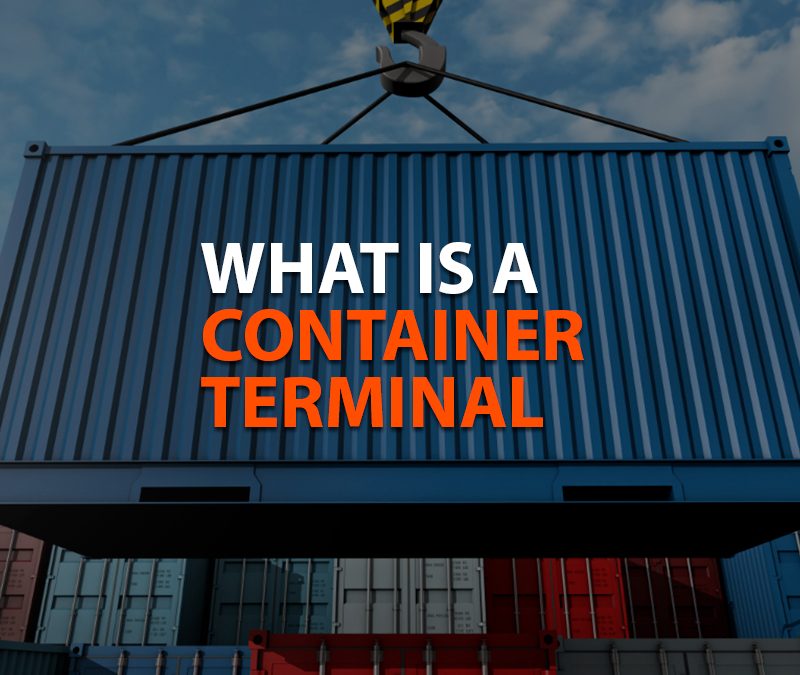In today’s interconnected world, where goods travel across continents, container terminals serve as bustling hubs of commerce, playing a pivotal role in shaping the global economy. But what exactly is a container terminal, and why are they so essential? Let’s unpack the basics.
1. Defining Container Terminals:
At its core, a container terminal is a facility where cargo containers are transshipped between different transport vehicles, such as ships, trains, and trucks. Picture a bustling harbor, where mammoth ships unload colorful containers filled with a myriad of products, from electronics to clothing, ready to be dispersed across the world.
Container terminals are the backbone of international trade. They facilitate the movement of goods on a massive scale, enabling businesses to reach markets worldwide. Without these terminals, the intricate web of global trade would come to a standstill, impacting economies, industries, and consumers alike.
2. The Anatomy of a Terminal:
Container terminals are ingeniously organized spaces. They are equipped with an array of cranes, gantries, and straddle carriers, operated by skilled professionals, ensuring the smooth movement of containers. These terminals boast extensive storage areas, where containers are stacked like building blocks, waiting for their next voyage.
A. Cranes and Gantries:
At the heart of every container terminal are the towering cranes and gantries. These mechanical giants, often seen stretching their arms high into the sky, are responsible for unloading containers from ships. Equipped with advanced technology, these cranes can lift containers weighing several tons with remarkable precision. The ballet-like movements of these machines are a testament to the expertise of their operators, who orchestrate the unloading process with finesse and accuracy.
B. Straddle Carriers and Reach Stackers:
Once unloaded, containers need to be moved and organized efficiently within the terminal. This is where straddle carriers and reach stackers come into play. Straddle carriers, resembling mechanical spiders, can lift containers and transport them short distances. Reach stackers, on the other hand, are versatile machines capable of stacking containers vertically, allowing for optimal use of space within the terminal.
C. Storage Yards:
Container terminals boast vast storage yards, where containers are organized based on their destination, size, and type of goods they hold. These yards are like carefully planned cities, with rows of containers neatly aligned, creating a visually striking mosaic of colors. Terminal operators meticulously plan the layout of these yards, optimizing space to accommodate the ever-increasing volume of containers arriving daily.
D. Quay Walls and Berths:
The quay wall is the bustling edge of the terminal, where enormous ships dock to unload their precious cargo. Berths, specially designed docking spaces, are equipped with fenders and bollards to ensure the safe mooring of vessels. Terminal operators coordinate closely with ship captains, guiding them to the right berth and ensuring a smooth transition of containers from ship to shore.
E. Control Towers and Technology:
Overseeing this intricate dance of machinery and logistics are control towers equipped with advanced technology. From here, operators monitor the movements of every container, ensuring they are loaded onto the correct mode of transport for their onward journey. Terminal management systems, powered by sophisticated software, provide real-time data, allowing operators to make informed decisions, optimize workflows, and minimize delays.
In essence, the anatomy of a container terminal is a symphony of engineering marvels, human expertise, and technological innovation. It’s a world where precision meets power, and efficiency is the key currency.
4. Technological and Environmental Advancements:
Modern container terminals are embracing cutting-edge technology. Automated cranes guided by artificial intelligence, GPS tracking systems, and sophisticated inventory management software are revolutionizing these hubs, enhancing efficiency, and ensuring timely deliveries.
As the world becomes increasingly conscious of environmental impact, container terminals are also evolving. Many terminals are adopting eco-friendly practices, including electrification of equipment, implementing renewable energy sources, and optimizing logistics to minimize carbon footprint.
5. Looking Ahead:
The future of container terminals is exciting. With advancements in automation, the rise of sustainable practices, and the integration of digital technologies like blockchain for supply chain transparency, these terminals are poised for transformative growth, ensuring the seamless flow of goods in the years to come.
In conclusion, container terminals are the unsung heroes of globalization, facilitating the movement of goods and driving economic growth. As we continue our interconnected journey into the future, these bustling hubs will remain pivotal, shaping the way we trade, connect, and prosper as a global community.






